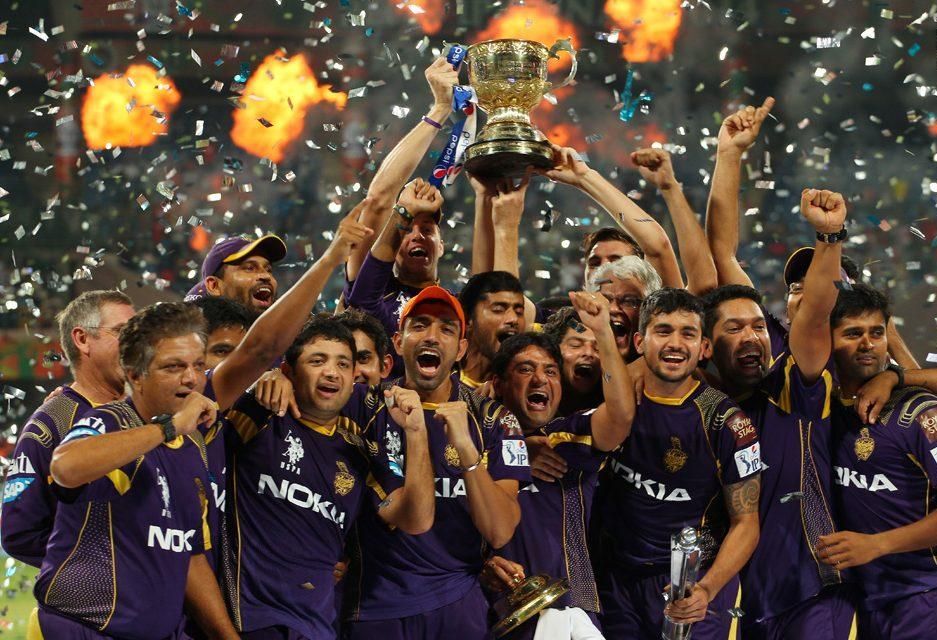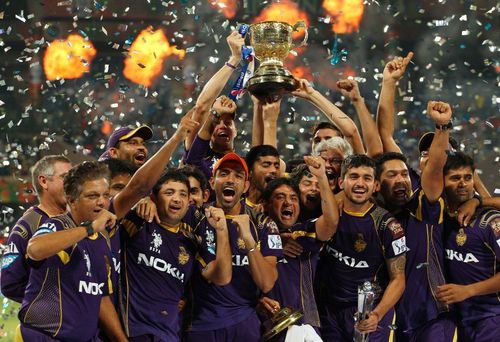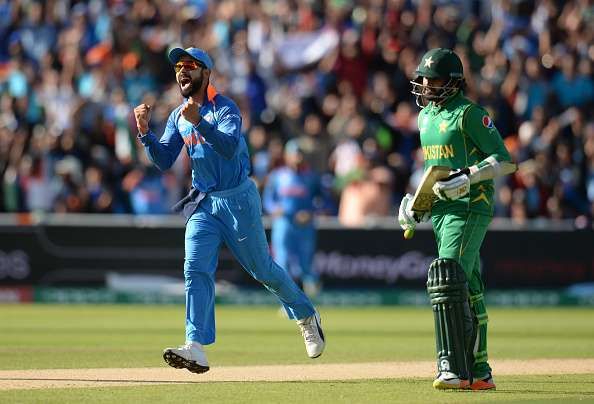
With franchise based structure showing the way, is international cricket worth protecting?

The emergence of various T20 leagues around the world has given a fresh migraine to the global governing body of cricket which seems to be pulling out all the stops to protect the international version of the game. The franchise based cricket tournaments have started to hog the global calendar so much so that the international tournaments have been left reeling without adequate windows. Of late, the cash cow, that is franchise based cricket has even started eating into the manpower of international cricket.
With a slow, yet steady erosion of international cricket, the International Cricket Council has been forced to underprop the moribund international version of cricket. A myriad of suggestions has been propounded to provide more context to international cricket such as splitting the Test teams into two tiers with relegations and promotions, incepting a Test championship, introducing a league structure to ODI cricket, and a conference style ODI format.
However, is international cricket- a version that many hold close to their heart – worth all the effort to rescue it?
Has international cricket done any good to cricket?
Even though international cricket is the most popular version of cricket now, it is erroneous to attribute cricket’s success to international cricket. Looking back at history, it is conspicuous that international cricket was the final result of a representative sport’s natural progression from representing a smaller demographic group to the largest demographic group.
Village games paved the way for county games and county games eventually lead to matches between nations, laying the foundation for international cricket. Cricket tapped into the nationalistic sentiments of the earthlings which added a lot more context and relevance to matches between nations.
Administrative bodies were then established to ensure that the games were regulated so as to ensure that the national pride which was at stake in international games wasn’t vandalised by poor performances. Soon, governments started exercising controls over these bodies resulting in a labyrinth of nationalism, politics, and corruption controlling cricket.
Nothing mobilises the masses like identity politics. Communal and national pride can galvanise a group of people together and channel their zealotry like nothing else. For some time, cricket was riding on flag-waving nationalism of the cricket playing nations. Anon, cricket spread like a wild fire within these nations, garnering fans who religiously followed cricket day in day out. But very soon cricket hit its ceiling.
Cricket’s complete dependence on nationalism for marketing and promotion and its inhibition to take cricket beyond the commonwealth of nations resulted in cricket finally hitting the end of the blind alley it was travelling through. Nationalism has its limits. There is a reason why no national team occupies the top spots in the Forbes’ list of most valuable sports teams and most popular sports teams on Social media.
Some of the earliest professional cricketers in cricket were village cricketers who were paid by gamblers who formed their own teams to strengthen their bets. It was Kerry Packer’s World Series that made cricket commercially viable while the Indian Premiere League catapulted cricket to the height of commercialization. In contrast to popular belief, it was the much-pilloried money that contributed to cricket’s growth and not nationalism which seems to be the apple of everyone’s eye.
Capitalism and not nationalism which is a sport’s greatest ally
National pride can never outstrip material gain for there is no better motivator than money in the world. In fact, nationalism is a gimmick since the fervent advocates of nationalism are demagogs who use national pride as a whip to enslave cricketers. The state of Sri Lankan cricketers is a case in point. They are underpaid and when they seek riches overseas, the bureaucrats rein in the cricketers utilising the harness called patriotism to limit their employment opportunity to national service.
Yet, the bureaucrats themselves are corrupt and do everything they can to harm the very national pride that they expect the cricketers to wear on their chests. They are everything but patriotic. They are as far from patriotism as anyone can be.
These bureaucrats can afford to be corrupt because they’re not accountable to anyone. Moreover, they have no incentive to promote cricket since that is not going to benefit them directly. In addition, nationalistic sentiments would ensure that irrespective of the team’s performances the fan base will remain loyal and stable to a greater extent.
Thus, the vast majority of the bureaucrats look at administrative positions in a national cricket body as an opportunity to avail themselves of the perks at their disposal, and they desist working hard to improve the game for it is least likely to bring them any direct and prompt material gains.
In contrast, franchise based cricket is fueled by the constant urge to maximise profits. Often greater team performance results in heftier sponsorship deals which directly benefit the owners of the teams. Furthermore, any corruption within the administrative body might harm the team’s performance and this will lead to pecuniary losses.
Poor performances of teams can reduce sponsorship deals and erode the fan base. The book “The Business of Sports” by Scott Rosner identifies the winning percentage of a team as one of the three variables that affect the revenue of a team. Thus, in a franchise based sport, a team needs to keep performing well to make a profit.
Also read: The Alexander who conquered Sri Lanka: An interview with Sikandar Raza
Free market revolutionised cricket
International cricket annihilates free market and locks down free movement of the workforce allowing the corrupt moguls to exercise more control over cricket teams. A free market, on the other hand, creates a heavy competition among teams forcing them to invest heavily in improving the performance of their teams.
This is not a mere conjecture. It was the free market that nurtured cricket during its nascent stage, saw it through its adolescence, and helped it become the adult it is today.
During a time when national bodies were exploiting cricketers, Kerry Packer masterminded the World Series. Tony Greig, in his MCC Spirit of Cricket Cowdrey Lecture in 2012, expressed the trauma he faced at the hands of international cricket.
“Obviously, there were also key issues with the England administrators that disturbed me, which I felt would never be resolved. I couldn't understand why we were only paid £210 a Test when we were playing in front of packed houses. The psyche of the administrators, the vast majority of whom I regarded as good friends, was that the honour of playing for England was enough - money shouldn't be a consideration.
“Consequently, I couldn't see an end to the game under-selling itself and there appeared to be no hope of expanding the revenue base for Test and county players alike, unless there was a revolution or at least a big upheaval.
Having to make changes to innocuous sentences in my books and newspaper articles at the behest of the TCCB was a source of irritation. And having to get permission to take wives on tour and paying more for friends' tickets to the Centenary Test than I was paid for playing in it, also didn't help,” the English all-rounder lamented.
The fans who are in thrall to nationalism often forget that cricketers are human beings themselves who, like all of us, have to eat at least three times a day to survive. Besides, being men, they are expected by the society to fend for their families. However, patriotism and national pride have paved the way for cricketers being reduced to objects that entertain the masses, and toeing the lines of nationalism resulted in players being permanently branded as betrayers and anti-nationals.
Expectations about job security, post retirement plans, and a better pay that no mortal is immune to are expected to be shunned by cricketers for they are expected to be satisfied with the pride that they are said to gain as a result of representing their nations.
"Kerry, money is not my major concern. I'm nearly 31-years-old. I'm probably two or three Test failures from being dropped from the England team.… I don't want to finish up in a mundane job when they drop me. I'm not trained to do anything. I went straight from school to playing for Sussex. I am at the stage in my life where my family's future is more important than anything else. If you guarantee me a job for life working for your organisation I will sign.", Tony Greig further expressed his ordinary human ambitions in his speech.
Unprecedented salary packages incentivized cricketers from all over the world to join what could be now termed as a revolutionary movement. Though Packer could get players to sign up, soon, the harsh realities of the free market started haunting the Australian tycoon. And the World Series failed to attract fans.
The World Series wanted more fans and it didn’t have the services of nationalism this time since almost all cricketers who joined the rebel series were outcast by their nations. Packer set the wheels of capitalism in motion. He innovated, tinkered with the rules, and tried hard to sell cricket to its consumers.
Cricket was started to be played under the moon; the insipid white uniforms were replaced with lurid jerseys; the red ball gave way to white ones. Kerry Packer showed the world the cricket can be marketed if the right effort is made.
Fast forward to 2008, the Indian Premier League fueled the second revolution in world cricket. Players who were scraping the leftovers thrown to them by their national administrative bodies to break even suddenly had a cash cow that turned them into millionaires. Finally, many of them found a league that would pamper them, cherish their value and most importantly treat them with dignity.
Obviously, a free market for cricket will threaten the purveyors of nationalism. You will hear, corrupt supremos, deliver hours of lectures on the evils of money. The cricket establishment will feel threatened for nothing deters the men in power like a freer workforce. Nonetheless, none can repudiate the fact that the free market enriched cricket like no other.
Also read: The curious case of Jean-Paul Duminy
Franchise based cricket is the way forward
Embracing the free market can bring cricket a lot more benefits. If ever franchise based cricket comes to dominate world cricket, then players will no more have to suffer the fate of having been born at the wrong place at the wrong time.
A couple of decades ago, Rashid Khan and Mohammed Nabi may have plied the trades in oblivion as their national team tried to gain recognition. But today, thanks to the franchises, national boundaries can no more impede rich talents getting the stage they deserve. If not for the IPL, the world could not have seen how good the Afghan leg spinner is.
Withal, the cricketing talents will no more be locked down by national boundaries. Currently, a player has to wait a maximum of four years before switching teams at the international level. In contrast, a player can switch teams every season in franchise based cricket.
This will also create a free market for cricketers to sell their labour. In such a scenario, the current revenue distribution crisis Cricket Australia faces shall never occur. Players can choose to play for whoever pays more, and teams will have to pay the wage players demand to get their services. To quote Kerry Packer, “They [the players] are entitled to the reward their skills demand”, which is only possible in a liberalised cricket structure.
It further ensures that talented players who become redundant in their team due to the presence of someone who is more skilled will have the option of looking for employment opportunities with teams that are in need of players with those skills. So, a spinner who is unable to break into a team with established spinners can opt to play for a side that is bereft of good spinners.
Franchise based cricket can also help cricket go global. Franchises would want to expand their fan bases and hence, would want to break into new frontiers. This will also allow cricketing talents from different parts of the world to perform at the highest level instead of having to wait for ten other players to form a team of their own. The million-dollar arm reality show that uncovered two baseball pitchers with immense potentials from India is an example of how talents can be found in the unlikeliest of places.
Stiff competition and the need to make a profit also encourage teams to innovate to optimise their performances. Northamptonshire’s Moneyball approach that helped them become a formidable T20 team in England despite their limited resources is a prime example of what innovation can lead to. In addition, franchises recruit the services of data analysts and sports psychologists to optimise their teams’ performances in every possible way, which is hardly seen in the international circuit.
Watch: The Inspiring Story Of Umesh Yadav
Saving international cricket is a pointless venture

The nostalgia of the fans and the years of nationalistic indoctrination will make it tougher for cricket to realise that in trying to save international cricket that a futile battle is fought. Cricket needs to be liberalised for the only way the quality of cricket can be improved is by embracing "the ruthless drive for efficiency that capitalism demands".
With India, Australia, England and to a certain extent South Africa and New Zealand being the only teams that are managed professionally, the tiered structure that most teams voted against has already started to being seen. The rich cricketing bodies have made an indirect arrangement to play among themselves often for that brings them the highest revenue. You can’t fault them. Cricket needs money. The players need money. Everyone needs money.
The current international cricket structure has started perforating cricket. The administrative bodies in Pakistan, Sri Lanka, the West Indies and Zimbabwe have already done irreversible damage to cricket in their countries. International cricket is not only futile but also counter-productive.
Cricket is caught between money and nationalism. Cricket wants to convince everyone and itself that the latter has its best interest over the other while continuing to be materialistic. Cricket cannot be blamed. It is trying to sing the tune of nationalism while struggling to cope up with the reality that in the end, it is money that matters the most. It is high time cricket sheds its mask and acknowledge publicly what it has already secretly embraced.
Also read: Virat Kohli's shots are now being used in Math lessons


